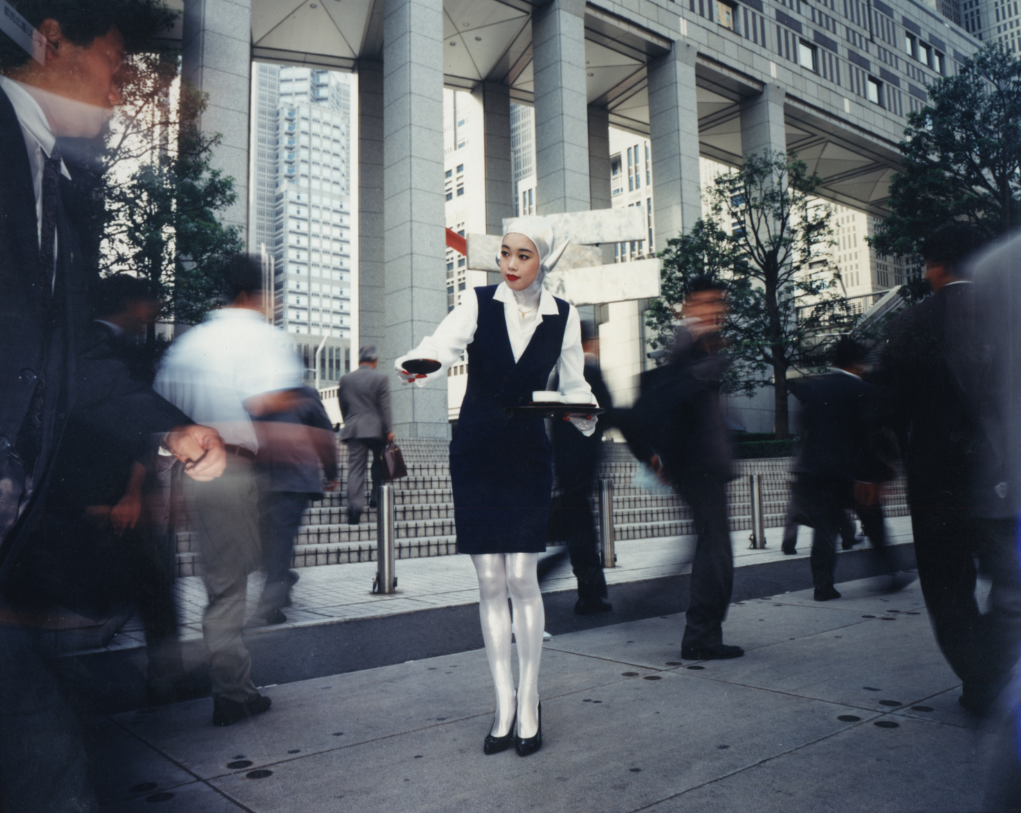From Our Archives: Mariko Mori
Tea Ceremony I, 1994. Images courtesy Mariko Mori
This interview was featured in Volume 2 of our 8th Issue: Fantasy
Andrea Blanch: Transitioning from model to artist must have been an interesting journey. When you were a model, were you also an artist who happened to be working as a model or were you a model who discovered art?
Mariko Mori: I cannot really answer straight away because when I started modeling, I was 16 so I wouldn’t know about art. But after visiting London, when I was 19 years old, I discovered art. I started creating around 23, 24. I was an art student producing artwork.
A.B. Your work is often shown in public with yourself playing the role of an outsider. Are you playing a role or do you feel disconnected from society like the aliens or toys you embody?
M.M. Well, it is a metaphor. I think you’re referring to my early work. It is a metaphor to have an objective point of view and sometimes it’s a metaphor for an outsider. Sometimes it’s a metaphor for going to newer contexts. Living everyday life and as an artist, we have quite a unique position in society. We are able to observe the world in a more international and global point of view, and not necessarily be part of one society or one country. You have a better overview of the world because of that reason.
Tea Ceremony II, 1994. Images courtesy Mariko Mori
A.B. When did you start becoming interested in aliens, robots and spaceships? Is it from your childhood toys or did you come to this later in life? Is it a cultural indoctrination?
M.M. It’s cultural, the popular culture in Japan where I grew up. It coincided with the economical growth of Japan. So in the 60’s and 70’s, people were very excited to think about the future.
The image of the futuristic idea was significant at the time.
A.B. You seem interested in the rise of technology and humanity, together. Do you feel like technology is coming at the cost of our humanity or enriching it?
M.M. I think the science technology is helping us in human’s curiosity. We cannot forget that technology and science is a reflection of the human mind. The human is creating a technology in order to reflect a human’s mind. I think this is very important to know.
A.B. Do you think we are alone in the universe?
M.M. If we consider the latest theory of multi-universe, parallel universe and renewal of the universe, none of those new theories suggest that we are alone in a universe.
Reference Image for Nirvana, 1997. Images courtesy Mariko Mori
A.B. You explore spirituality and mysticism. How do you view your gods?
M.M. Everything is connected and everything is related. All nature, every planet in the galaxy, this universe or even the multi-universe, everything has a relationship. I feel that’s
how everything is connected.
A.B. Your work Oneness is Buddhist or Shinto. Were you raised in a religion?
M.M. Shintoism—the goal is to live in everything that is living nature. This is really to give a lesson to the people to honor and respect nature. Everything from ants to the multi-universe, there’s good in it. It’s important to respect. It’s very morally oriented with a spiritual aspect to it. It’s about seeing the connection. It seems to me that Shintoism and Buddhism emerged, and those religions are able to show you a concept together.
For more of this interview, check out Volume 2 of our 8th Issue: Fantasy







